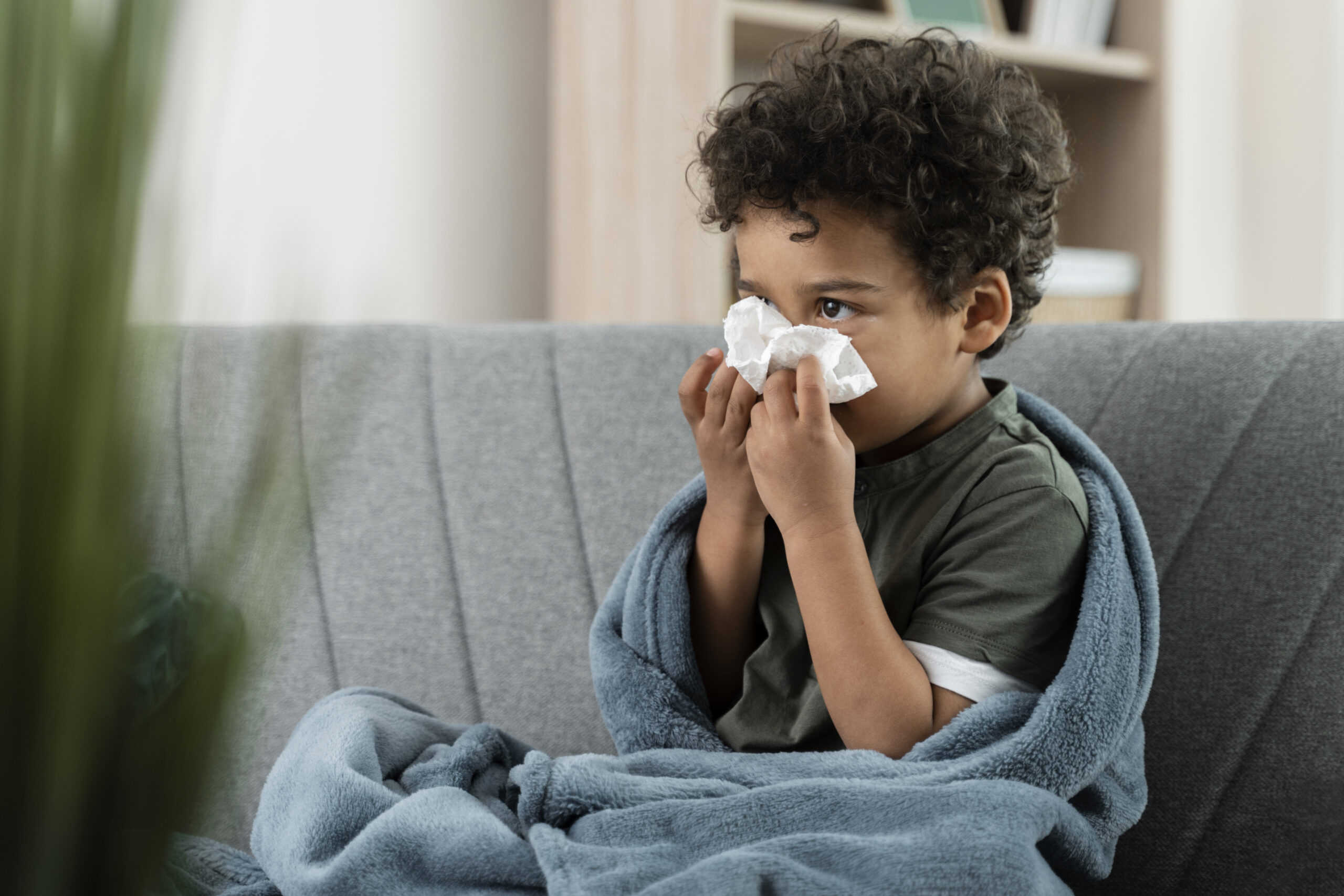The common cold is an infectious viral infection that affects the nose and throat. It sometimes also affects the sinuses and throat. Many types of viruses cause cold-like symptoms, including the rhinovirus. Children are mainly exposed to the common cold and may contract it thrice a year.
The common cold is an upper respiratory tract infection caused by bacteria that can last up to 8 or 10 days. There is no medicine for the common cold, and a cure commonly involves controlling symptoms until the infection is recovered.
Causes of Common Cold
The leading cause of the Common Cold is rhinovirus. This virus can enter through the Eyes, Nose, or Mouth. When an infected person sneezes or coughs, rhinovirus droplets can combine in the air. Then, contracting this infected air can make your child ill.
Handshaking with a person who has a cold can also contribute to the common cold. Thus, you must avoid touching your face after this kind of contact. Cold viruses can stay on different surfaces, such as towels, toys, dishes, or telephones. When your children share these infected items, it may cause virus transmission; hygiene and disinfecting are crucial.
Understanding the causes and transmission of the common cold can encourage people to take preventive measures, such as handwashing, avoiding close contact with sick people, and maintaining a hygienic atmosphere to decrease their chances of contracting this pervasive infection.
Symptoms of Common Cold
The signs of Common cold in children arise within 1 to 3 days after contracting the cold virus. The symptoms of this disease can last for one week or two weeks. The signs of a common cold can be distinct for each child. The symptoms of a Common cold include Problems sleeping, Congestion in the nose, Fussiness or sleepiness, Sometimes vomiting and diarrhea, and Fever.
Other symptoms of common cold in other children may include
- Scratchy,
- Watery eyes
- Stuffy or runny nose,
- tickly throat
- Sneezing
- Congestion
- Mild hacking cough
- Sore throat
- Headaches
- Achy muscles and bones
- Low-grade fever
- Watery discharge from the nose that thickens and turns yellow or green
- Chills
- Extreme tiredness (fatigue).
Diagnosis of the Common Cold
The Diagnosis of the Common Cold is wholly based on the signs that occur in children. However, common cold symptoms can be the same as allergies, bacterial infections, or health issues.
Treatment of Common Cold
There has been no treatment available for the Common Cold till now. Generally, the symptoms of this infection are recoverable in children on their own. The symptoms of a Common Cold can ease until the disorder passes. You have to try to keep your child hydrated. You may give them a lot of fluids like water, apple juice, and warm liquids like soup. These fluids prevent your child from dehydration.
You need to ensure that your child is resting correctly and try to keep your child at home until their fever is recovered.
How Do I prevent my child from common colds?
- Children may touch their eyes, nose, or mouth with unwashed hands. It would help if you tried to ensure your child doesn’t do this. You also have to teach your kids about the significance of hand washing.
- Always try to use tissue when you are sneezing and coughing, then throw it simultaneously. After that, you must wash your hands to avoid the viral infection.
- Wash your hands before eating the food.
- When many children play together, You must ensure that your child’s toys and play areas are adequately cleaned.
FAQs:
Q.1. What are the complications of the Common Cold in Children?
Ans. If your child has a cold, there are chances of complications, including Ear infections, Pneumonia, Sinus infections, or Throat infections.
Q.2. What are the symptoms of the common cold in babies?
Ans. Trouble sleeping, Fussiness, nasal congestion, vomiting, diarrhea, and Fever are the signs of the common cold in babies.
Q.3. What Are The Risk Factors of Common Cold in Children?
Ans. The Risk Factors of Common Cold in Children can be:
- Less immunity power in children can increase the risk of getting cold germs.
- When children are in close contact, cold transmits quickly.
- Bad habit of touching eyes, nose, or mouth with uncleaned hands.
- Children mostly get colds and coughs in the fall and winter.
Q.4. How long does a common cold last in Children?
Ans. The Common Cold lasts for one or two weeks in children.
Q.5. Is Common Cold Preventable?
Ans. You can prevent a cold by frequently handwashing and avoiding someone with a cold or infection. You can also use the face mask that prevents the infection caused by rhinovirus in airborne droplets from coughs or sneezes.






